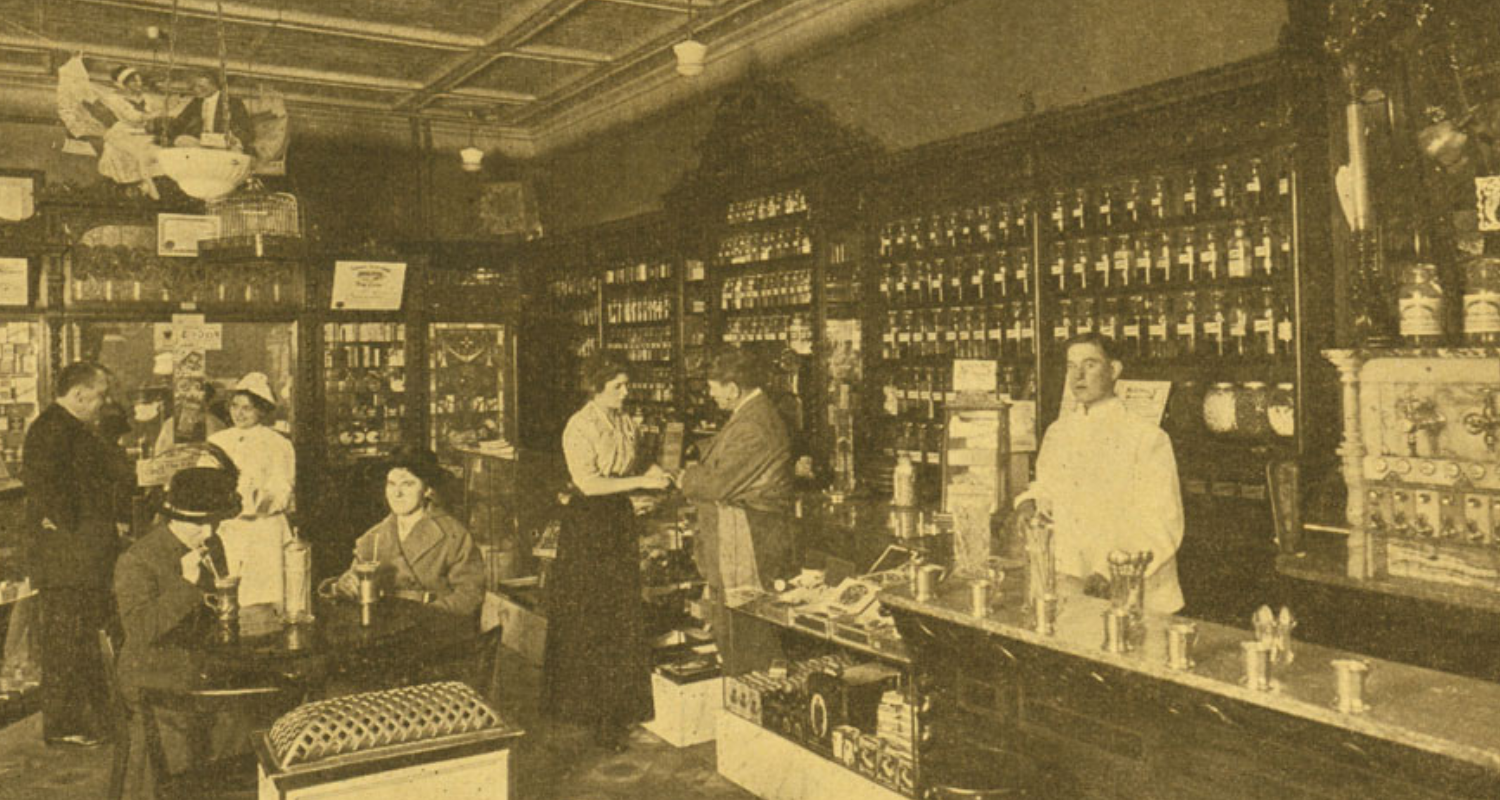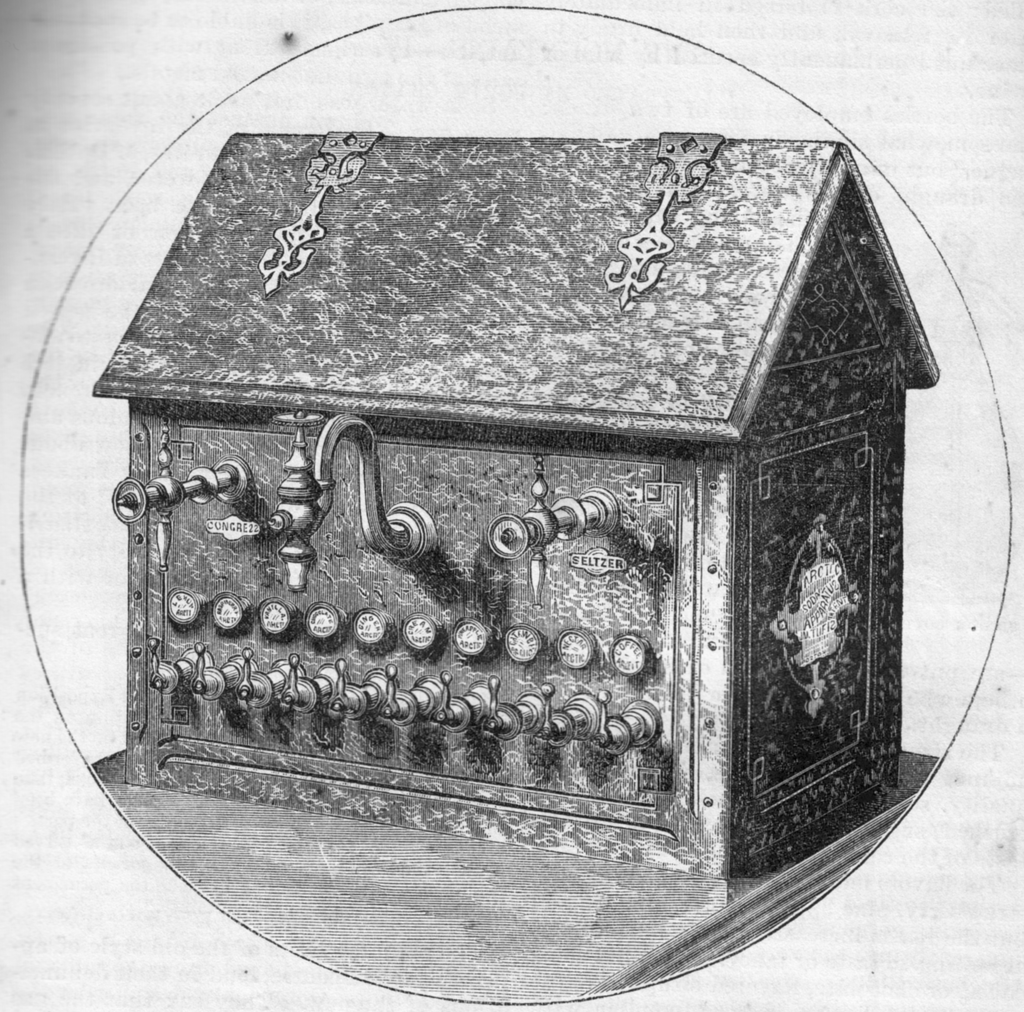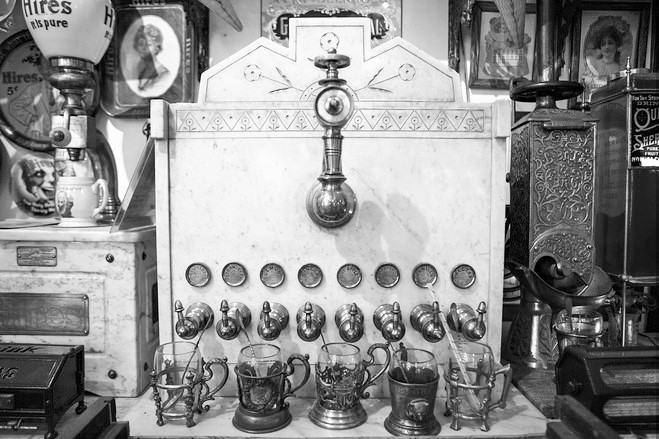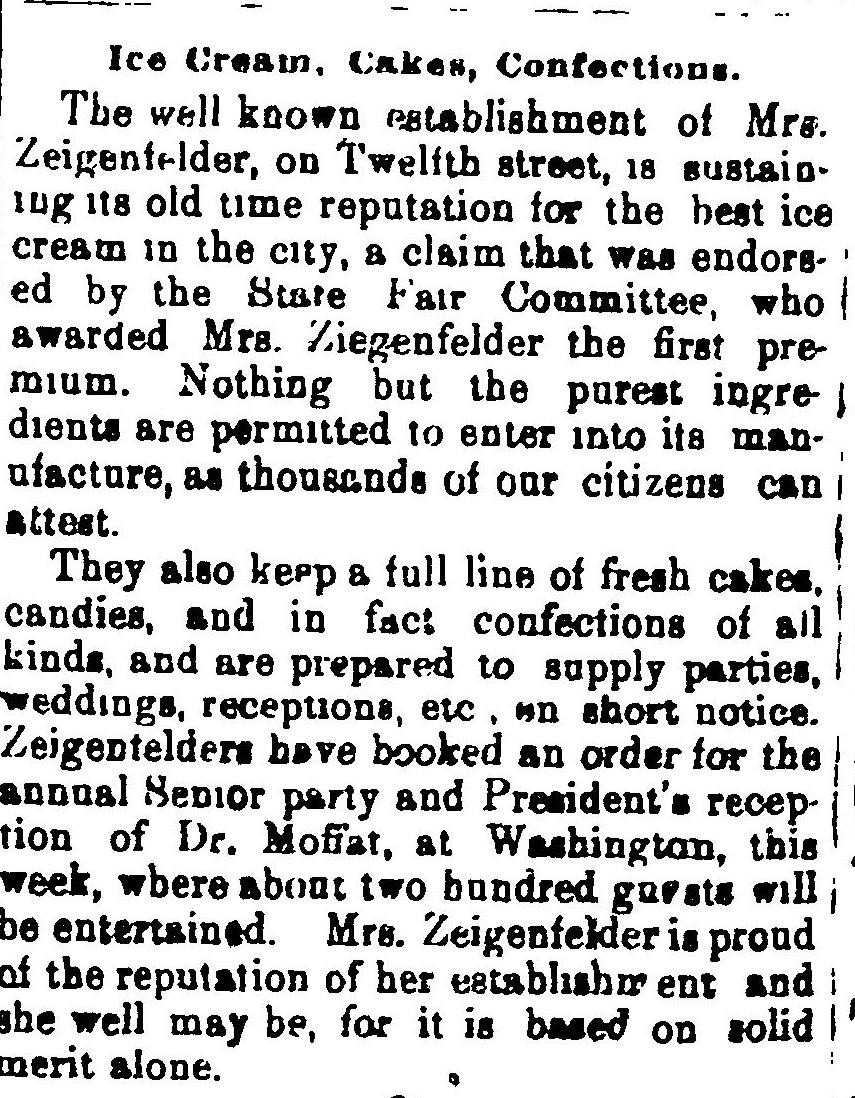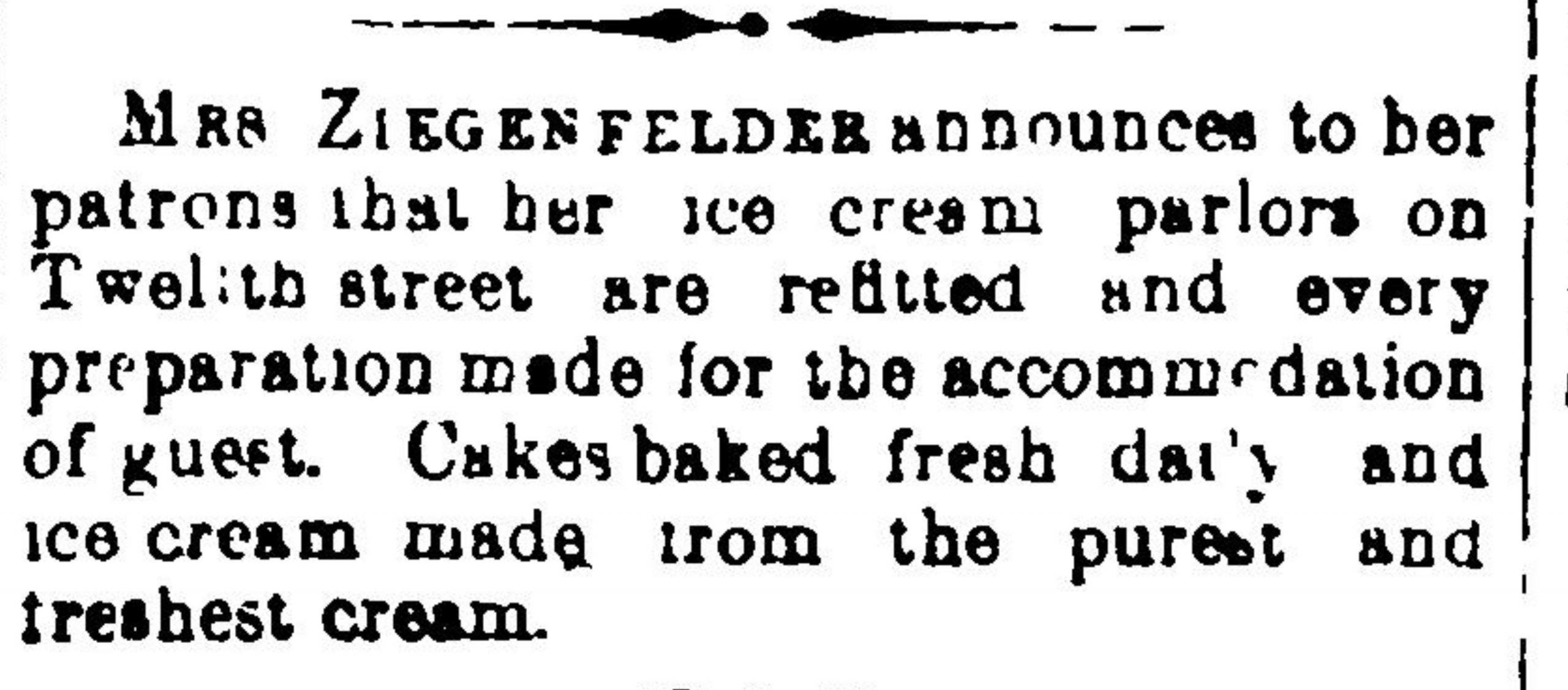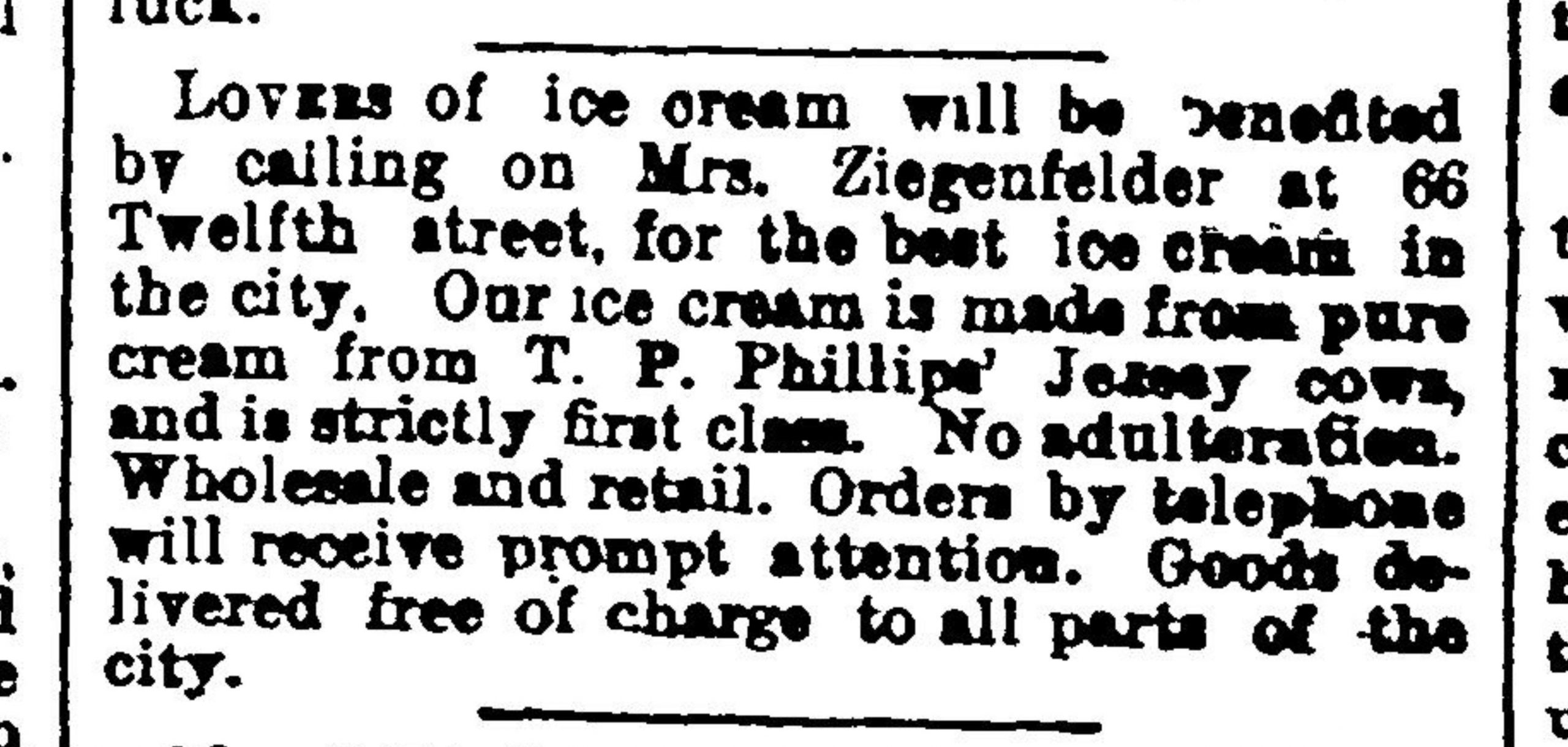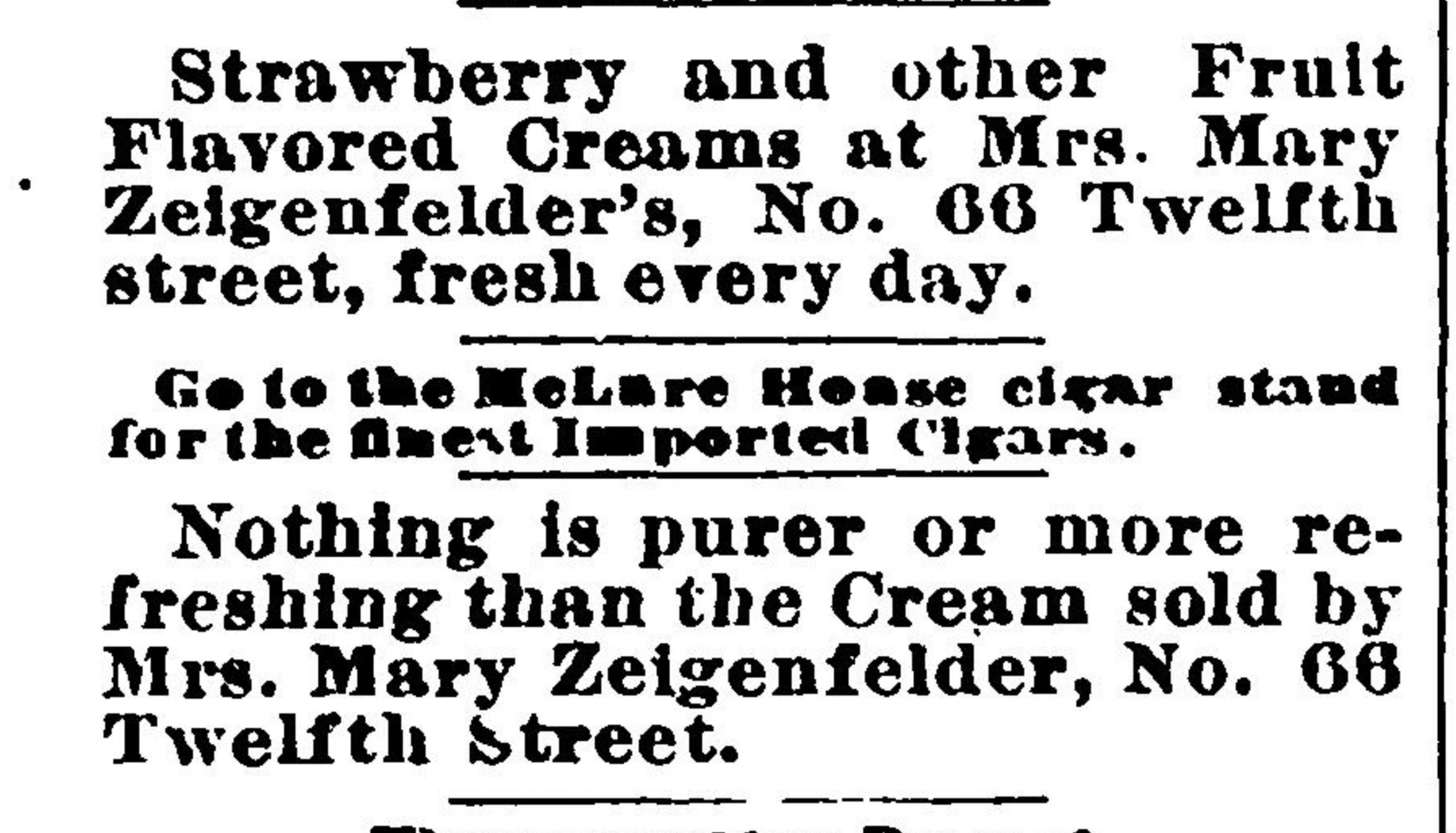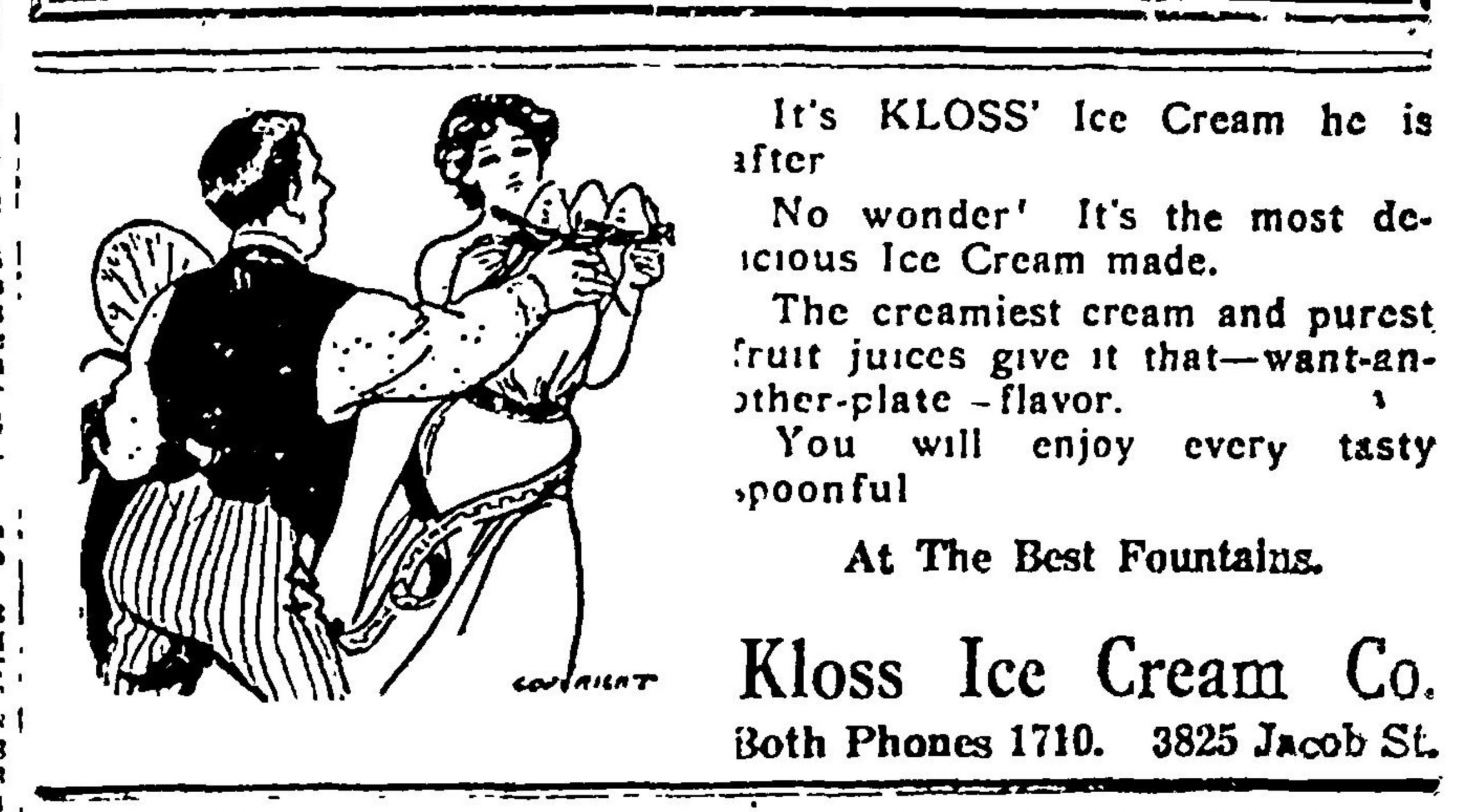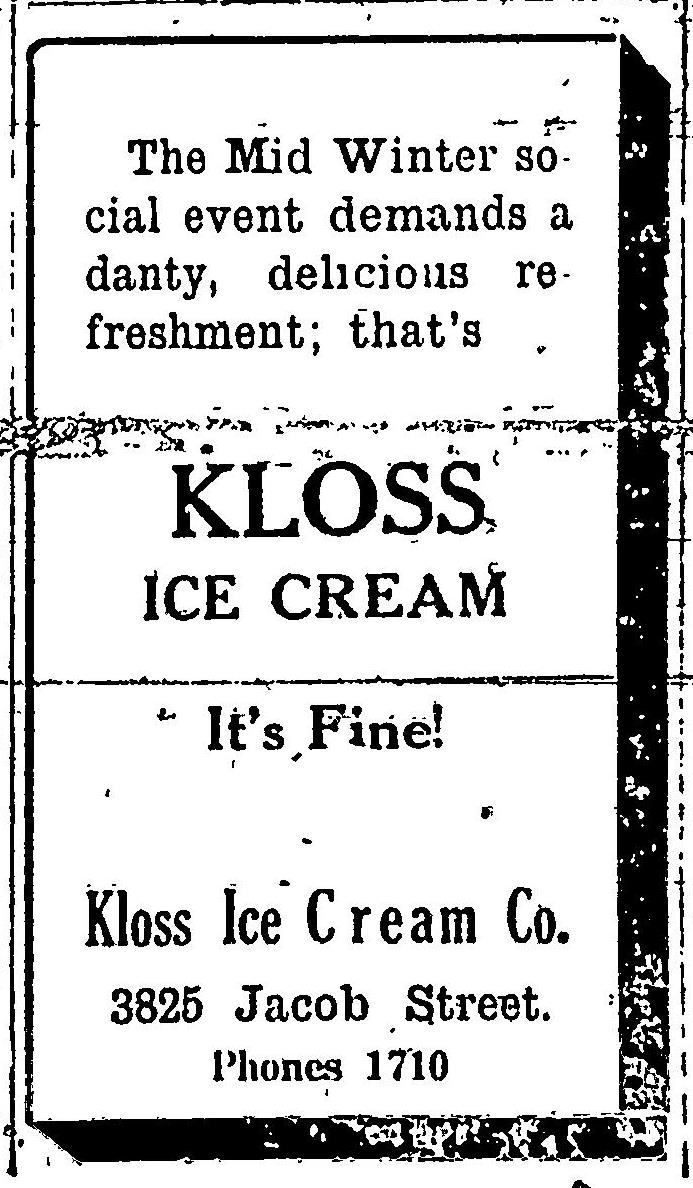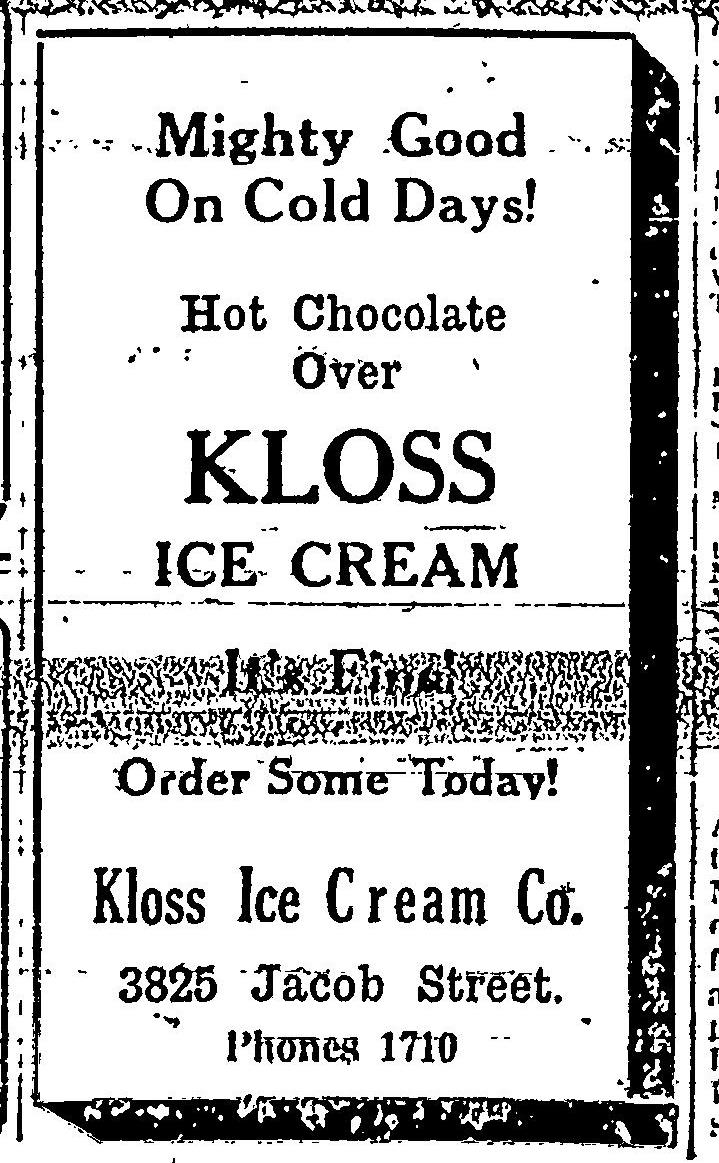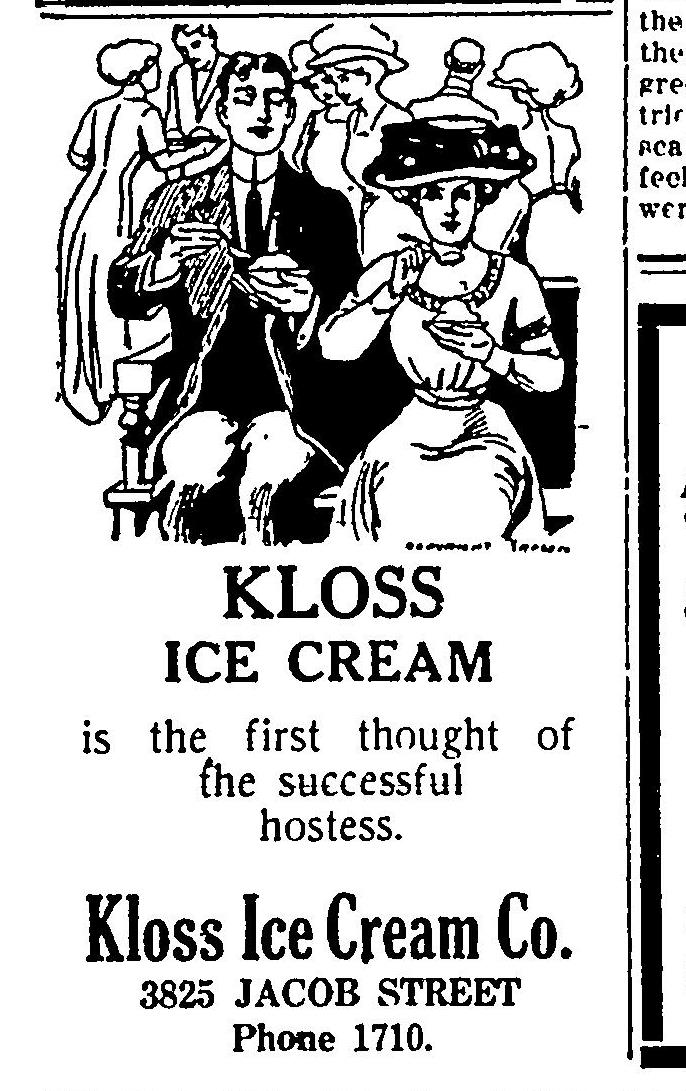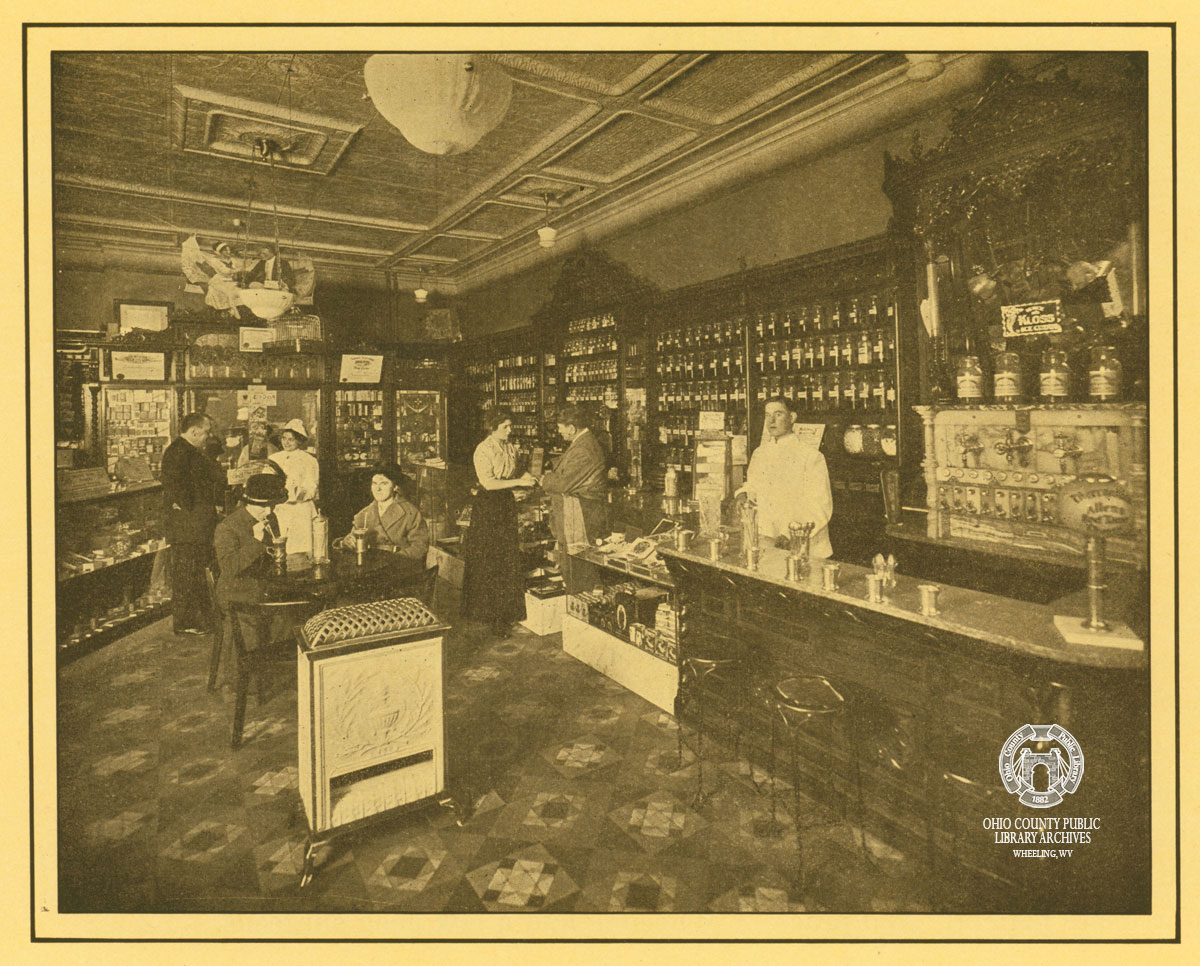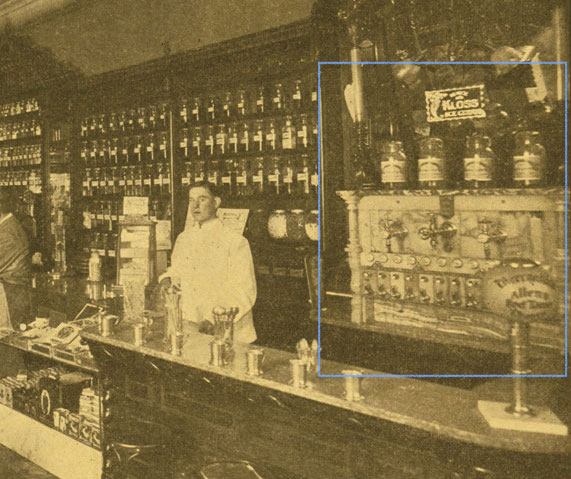These days, it’s easy to get your hands on something cold and sweet. However, 100 years ago if you wanted a fix, you’d have to go to a bar – or a counter, to be more specific. Before the dawn of at-home electric refrigeration and premixed soda pops, people would have to go out to satisfy their sweet tooth. Soda fountains were located in drug stores, or sometimes as stand-alone businesses, and would serve a variety of non-alcoholic beverages concocted out of soda water, syrups, and ice creams. While the soda counter may be closely associated with the 1950s, their history actually extends back into the mid-1800s, with some surprising Wheeling connections!
At the Fountain
Today, soda pop usually comes in one of two ways. It’s either pre-mixed and individually packaged or comes from a fountain. Modern soda fountains simultaneously mix syrup and carbonated water as it dispenses into a cup when a lever is pressed. This isn’t much different from its predecessors, where operators would open spigots to blend syrup, soda, and occasionally ice (or ice cream) in a glass. Although soda has found a place as a sweet treat, it started as a medicinal drink, with early soft drink manufacturers making all sorts of wild claims.1,2
One of the first patents for a soda fountain was issued in 1833 to two Ohio Valley dwellers– Jacob Ebert of Cadiz, and George Dulty of Wheeling.3 Unfortunately, multiple fires at the U.S. Patent Office in the 1800s destroyed any documentation of this feat. Because of this loss of records, we may never know what the specific machine looked like, but other contributions to soda technology give us some ideas.
Another iconic fixture of early soda fountains with Wheeling roots was the 1896 Coca-Cola syrup urn. Not to be one a part of the crowd, Coca-Cola distinguished itself by providing druggists with an ornate porcelain urn to dispense their trademark syrup. This dispenser was manufactured by the Wheeling Pottery Company, 4,5
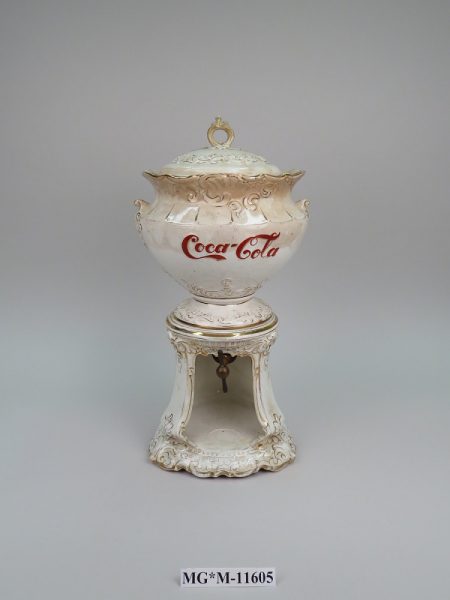
Wheeling’s Sweet Past
Now easily accessible, ice cream was once reserved for special occasions. Anyone who has made ice cream the “old fashioned way” by turning a dasher and fussing over rock salt and ice can attest to that. Before the availability of electric freezers, going out to enjoy ice cream at a soda counter or ice cream was one of the best options for enjoying this cold treat. Luckily for Wheelingites, the cold comfort of ice cream was never far, with enterprising citizens getting into the ice cream trade as early as the 1860s.
Mrs. Ziegenfelder’s
These days, the name Ziegenfelder is synonymous with their signature colorful twin pops. However, around the 1800s, there was a Mrs. Ziegenfelder, and she made ice cream.
Located at No. 66 12th street, Mrs. Ziegenfelder made cakes, confections, and ice creams out of her location within the Oddfellows Building.6 In a time when there was no meaningful oversight for food safety or integrity, she appeared to maintain a high level of integrity, claiming her ice cream was made with “cream from T.P. Phillip’s Jersey Cows– strictly first class.” The emphasis on pure and fresh cream may seem obvious, but consider that then, as today, many ice creams and frozen dairy products are made with fillers, thickeners, and artificial flavors. Beyond cultivating a devoted clientele, her dedication to quality ice cream led her to win first place at the State Fair in 1886.
Want to see what the Zigenfelder family has been up to since then? Take a peek inside Zigenfelder’s East Wheeling production facility!
Kloss Ice Cream
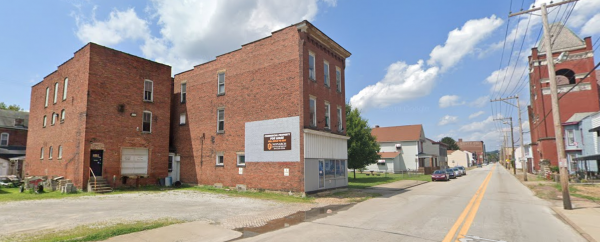
Just 30 years after the heyday of Mrs. Ziegenfelder’s Ice Cream Parlor, ice cream was beginning to follow people home. Kloss Ice Cream, started by John and E.M. Kloss, their ice cream quickly became a fixture in the Wheeling ice cream scene.
Most of their advertisements included text that suggested when and how people could enjoy their product. At midwinter social events, with hot chocolate, or just any time you have company, the Kloss advertisements were full of ideas. While their ice cream was available in the many soda counters around town, the ads also implied their ice cream was to be consumed at home.
How could it get there without melting? Insulated paper containers meant that ice cream could safely be transported to places without an icebox.
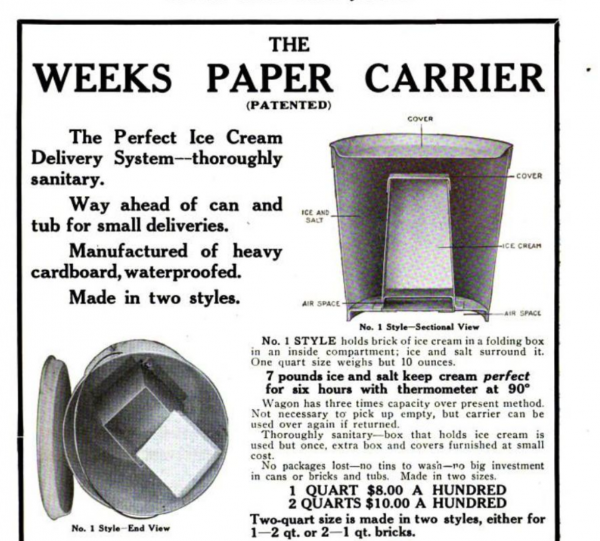
Kloss Ice Cream was also served “at the Best Fountains” around town, nodding to the burgeoning soda fountain culture of the era. In this photograph of Menkmeller’s Drug Store, a Kloss Ice Cream sign is visible above the soda fountain.
Today, ice cream, soda pop, and other cold treats seem to be everywhere and nowhere at the same time. While the drug store soda fountain may be a thing of the past, the availability of these products has dispersed into the marketplace in different ways. Maybe it’s a coffee shop selling ice cream or a corner store with a modern electric soda fountain. Perhaps it’s a quick trip across the river to a place that still makes their ice cream in-house from scratch. Or maybe, it’s the resurgence of seltzer water, or the adoption of a lightly-sweetened, tart, effervescent beverage with purported health benefits (Kombucha). Even if the druggist is no longer slinging drinks and dipping cones, cold treats remain a fixture in the lives of many Wheelingites.
• Kate Wietor is currently studying Architectural History and Historic Preservation at the University of Virginia in Charlottesville, Virginia. She spent one glorious year in Wheeling serving as the 2021-22 AmeriCorps member at Wheeling Heritage. Since moving back to Virginia, she’s still looking for an antique store that rivals Sibs.
References
1 Kat Escher. “Coca-Cola’s Creator Said the Drink Would Make you Smarter” Smithsonian Magazine. March 29, 2017.https://www.smithsonianmag.com/smart-news/coca-colas-creator-said-drink-would-make-you-smarter-180962665/
2 Jaclyn Einis, “The Rise and Fall of the Lime Rickey, the Soda Fountain Comeback Kid” Serious Eats. August 10, 2018. https://www.seriouseats.com/lime-rickey-soda-fountain-history
3 Fred Ferretti, “A Remembrance of Soda Fountains Past” New York Times. April 27, 1983.https://www.nytimes.com/1983/04/27/garden/a-rememberance-of-soda-fountains-past.html
4 “The Iconic 1896 Coca-Cola Syrup Urn” The Martin Guide to Coca-Cola Memorabilia. https://www.earlycoke.com/the-1896-coca-cola-syrup-urn/
5 “Coca-Cola” Syrup Dispenser. Smithsoanian National Museum of American History. https://www.si.edu/object/coca-cola-syrup-dispenser:nmah_723173
6 Wheeling Intelligencer, March 18, 1873


